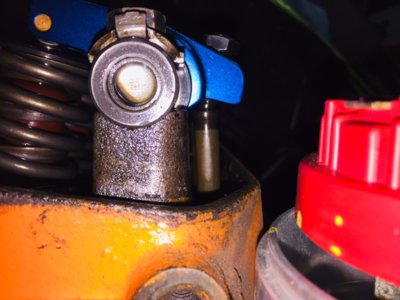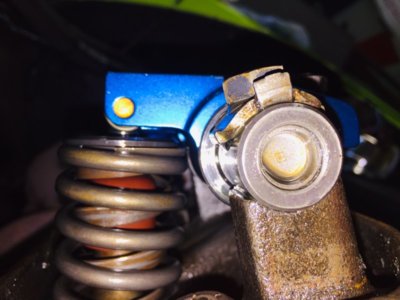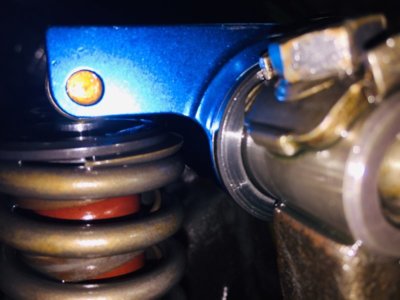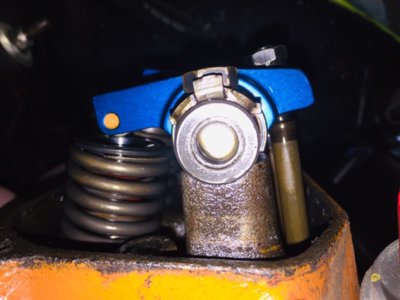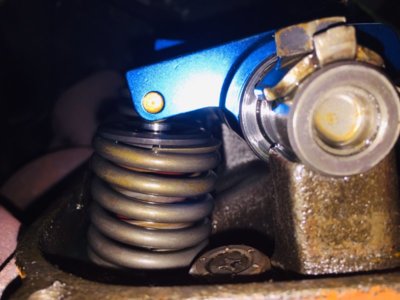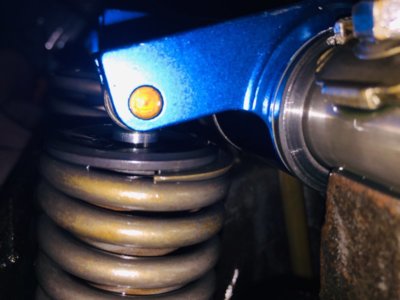My retainers look same finish as on the website, there it states Chrome Moly, similar as the ones in the link. (could be what is installed)
I had a reply from Hughes Engines and they unfortunatly told me the camshaft info given on the website is all they have, so no full spec cam card or so.
They mentioned they recommend the 1106 springs for this camshaft
http://www.hughesengines.com/Index/...Y2sp&level1=VmFsdmUgU3ByaW5ncw==&partid=10270
My springs actually look similar, also equipped with this damper spring.
If these springs were used i should see just below 150# of spring pressure in closed position and 335-340# at full valve lift. (my lift on the valves should be 0.565"/0.571")
I will reply Hughes and ask about using these small retainers, and why not using a same size retainer.
It will be reducing weight obviously, it is hard to believe it is not safe for use if they sell these kits like that.
Edit: This is what it says on their website:
Tech Notes: The change in installed height listed above tells you approximately how much the installed spring height will be affected by using the listed retainer vs. an average of several stock retainers.
Valve spring retainers do not need to be the same diameter as the valve spring used. The retainer OD should be approximately 1/8" smaller than the OD of the valve spring. The retainer should also fit easily onto the valve spring, but not so loosely that the retainer is sloppy on the spring. When using a retainer that offers more installed height than normal, make sure there is a minimum of 0.010" clearance between the rocker arm and the retainer when the valve is in the closed position.
Guess i just need to check the locater shoulder on the retainer that locates the spring in the center, i think this will be too small as the spring is allowed to sit slightly "off-center" from the retainer.
After reading those articles about valve train geometry and how poor geometry costs power and valve guides i did snap a couple of pictures of how the pushrod/adjuster angle is and where the rocker roller starts and ends up at valve full open.
You can see the roller sits on the exhaust side of the valve stem in full valve lift position so yeah, it needs to be raised.
As how i understand, when going roller rockers raising the rocker shaft is a must but was never done.
Raising the shaft will also increase the angle on the push rod and adjuster, which looks ok a.t.m. but obviously will become worse after raising the shaft.
A matter of give and take, the best i could do on the push rod side is to install the longest possible push rods to minimize the adjuster length, will see what it works out to be.
Can anyone explain what is the score with these valve spring retainers "valve stem size".
Because my valve stems are 0.372", which are stock size for a 440.
But looking at different websites and catalogs, most spring retainer sizes mentioned are
11/32" (0.344") and
3/8" (0.375").
Same with the keepers/locks, what size should be used on my valve stem size?
I assume the 11/32", they will leave some space between both keeper halves which is quite normal.
The 3/8" size should be slightly too big for my application, right?
